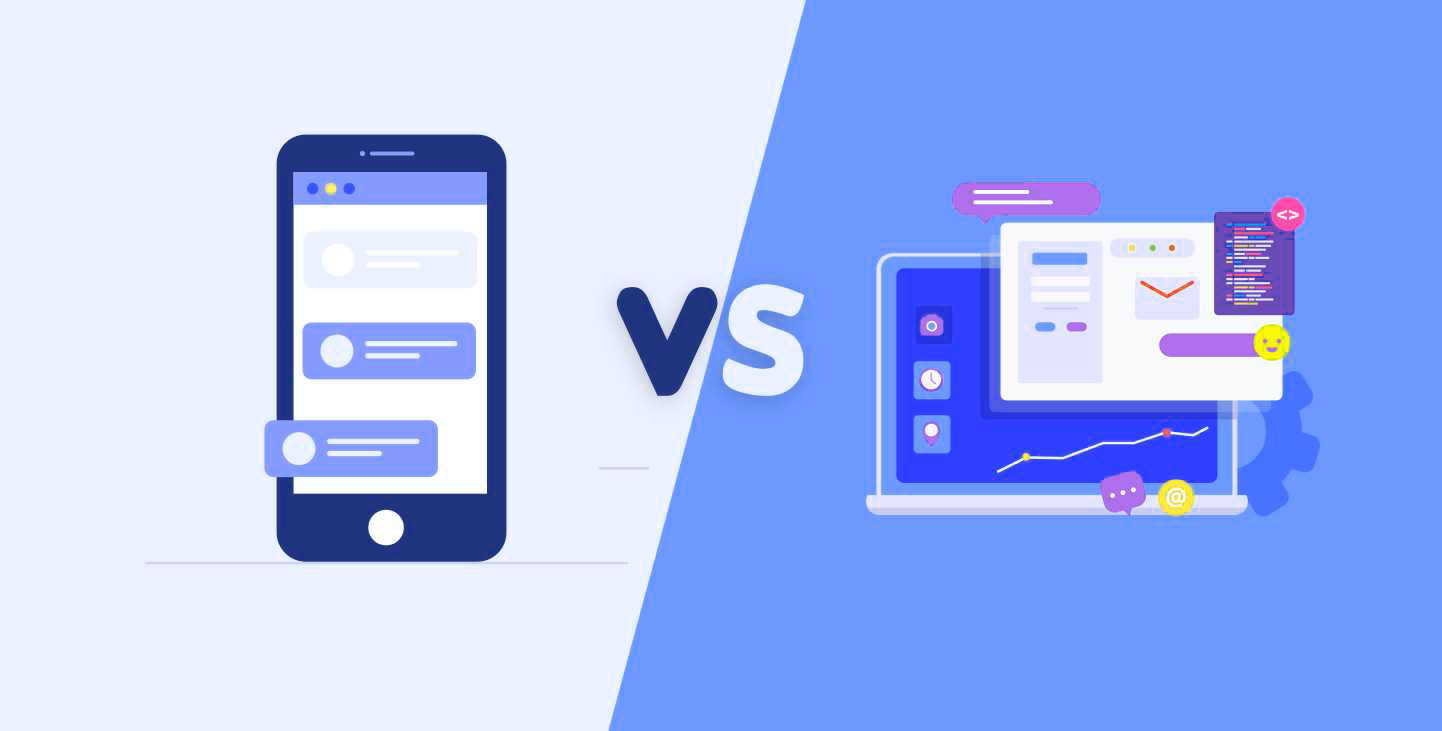Technology
Progressive vs Responsive Web Development: Which One is Better?


You may be wondering why there isn’t a more thorough comparison of the two well-liked methods of web development, responsive web design and progressive web apps, given how similar they are in terms of how they seem and function. I guess this is it. In this post, we’ll contrast responsive web design with progressive web apps to see how they actually compare and contrast.
What Does Responsive Web Design Entail?
Responsive Web design and development is the strategy that proposes design and development should respond to the user’s behavior and environment based on screen size, platform, and orientation. The practice involves a combination of flexible grids and layouts, images, and savvy use of CSS media queries. As the user transitions from a laptop to an iPad, the website’s resolution, image size, and scripting capabilities should adapt automatically.
If a user has a VPN for iOS installed on their iPad, for instance, the website should not obstruct the user’s access to the page. In other words, the website should be equipped with the technology to respond automatically to the user’s preferences. This would eradicate the need for a separate phase of design and development for each new product introduced to the market.
What is Progressive Website Development?
Progressive Web App development, a term coined by Alex Russel in 2015, is the next inevitable evolution of the Web due to its numerous advantages over the typical responsive website. According to Pete LePage Google Developer Advocate, the “progressive” aspect can be explained as “as the user builds a relationship with the app over time, it becomes increasingly powerful.”
In layman’s terms, a PWA is a website that mimics the functionality of a genuine mobile application, including push notifications, offline capabilities, and so on. And as a result, the overall experience is superior to that of a responsive website, as PWAs are able to retain all the purported advantages of a web-based platform.
Benefits of Progressive Websites


Offline mode
PWAs are cacheable by web browsers and can be used offline. This is excellent news for businesses with product catalogs, as it enables customers to peruse products even when they are not connected to the internet, thereby increasing user engagement and possibly resulting in higher revenue.
Increased efficiency
“53 percent of users will forsake a site if it takes more than three seconds to appear! “And once loaded, users expect them to be quick no jerky scrolling or sluggish interfaces,” Google states on its website. Due to the fact that PWAs employ so-called service workers, which are JavaScript files that operate independently of the main browser thread and proactively control the caching of assets, they are able to deliver significantly superior performance than conventional web applications.
There is no need for installation or manual updates
There’s no need to visit the Play Store or App Store to install Twitter’s progressive web app. Users can log in by visiting mobile.twitter.com without delay. When Twitter updates its PWA, users do not need to manually install it; all new features and problem corrections are automatically accessible.
Obviously, consumers are not the only beneficiaries of seamless revisions. A company that releases and maintains a PWA can anticipate fewer customer support requests from users who are still using an obsolete version of the app, and it can release updates as frequently as it likes without upsetting its users.
Progressive Versus Responsive Web: Understand The Distinction
When mobile first became prevalent, responsive design was the logical first step to improving website performance for mobile consumers. It rapidly became a requirement for all new websites, and up to 87 percent of site creators have incorporated it in order to provide exceptional digital experiences for website visitors.
However, responsive websites were unable to provide sophisticated functionality such as offline support, push notifications, and other native app-like features that smartphone users have come to expect. These features are required to increase consumer engagement and conversions on your e-commerce website. As a result, many online businesses are contemplating the conversion of their responsive websites into Progressive Web Apps, or PWAs.
Progressive apps emulate the behavior of apps, but they are actually websites. It is designed using CSS, HTML5, or JavaScript exclusively for specific screen sizes. After detecting the user’s screen size, the PWA presents a customized version of the website when the user visits. This necessitates the development of multiple variants of the same website/web application, depending on the screen measurements of smartphones and tablets in common use.
In contrast, a responsive site is created only once, and it is the responsibility of each mobile device to display the site according to its screen dimensions. Typically, scripts operating in the background adapt the site to the user’s screen size.
Progressive Web Applications (Pwas) Versus Responsive Websites: Which Is Best For You?
Both are intended to provide a seamless web experience for consumers on various devices, so which one is more effective? Here are several distinctions between the two:
Pwas Are More Efficient Than Responsive Design
After a responsive website, the next stage is a progressive app. Almost certainly, your company already has a website or web application, and you can enhance its performance and make it load quicker on various mobile devices. The UK apparel brand George, for instance, reported that the implementation of PWA resulted in a website that was 3.8 times speedier than its predecessor. The good news about PWAs is that they are supported by older browsers and include modern features such as offline support, push notifications, and native video and audio capture capabilities.
Pwas Offer Offline Functionality.
The application cache feature enables websites to store a substantial quantity of data offline, providing PWAs with many of the capabilities of native applications. Because of this feature, a progressive web app can be utilized without an active Internet connection. The online streaming platform ZEE5 was able to reduce latency time by fifty percent while also enabling users to browse their catalogs in offline mode.
Pwas Are Costly to Produce and Maintain.
Progressive web apps must take into account the screen dimensions of the user’s device, which necessitates that the website be developed multiple times for various devices. This unquestionably makes PWAs the more expensive of the two options, as it can be more expensive to maintain the web app over time than a responsive website.
However, after instituting a PWA, numerous businesses have seen their profits skyrocket. Consider the case of the Best Western River North Hotel, whose revenue increased by 300 percent after implementing a PWA. With paws, you can enjoy a stellar app experience without incurring expensive development costs. Progressive web apps make your website feel like a high-quality, well-developed, and costly app – and that’s excellent value for money, given that PWAs are less expensive than apps.
In addition, you won’t have to go through the laborious process of employing app developers, deciding between native and hybrid apps, selecting the appropriate platform, testing the app, etc. Progressive web applications permit the incorporation of various features, such as file access, task scheduling, SMS/MMS capability, offline storage, location, and device position, directly into a website.
Save Directly To Main Screen – No Downloads Required
The progressive web app can be saved immediately to the main screen of the user’s device and used as an app.
A PWA could:
- Start full-screen mode
- Obtain entry to the clipboard
- Access and view files through a browser.
- Display a sleek user interface that updates at 60 frames per second
- Using Web APKs, you can appear on the applications list as an application.
- Both function effectively with SEO and SEM to improve discoverability.
- Because responsive websites and progressive applications are fundamentally websites, they are excellent for SEO and SEM.
They can be made to rank higher by incorporating keywords into the headlines and content of your website. All content on websites and web applications is still crawled and indexed by search engines, which can have a significant impact on a website’s overall position in the search results. Through paid search engine marketing, businesses can promote both progressive web apps and responsive websites so that their websites and web apps appear at the top of search results for specific keywords and phrases.
Pwas Provide an Excellent App Experience Without The High Expenses Of Development
Progressive web applications (PWAs) provide your site the look and feel of a native app without the hefty development costs, making them a great value. Further, you won’t have to deal with the hassle of hiring app developers, deciding between native and hybrid apps, picking the correct platform, testing the app, etc. Features like file access, task scheduling, SMS/MMS capabilities, offline storage, location, and device position can all be included directly in a website through the use of progressive web applications.
Both Are Effective Tools For Maximising Visibility In Search Engines.
Since they function similarly to traditional websites, search engine optimization and SEM thrive on responsive websites and progressive applications. Better search engine rankings may be achieved by strategically placing keywords in titles and body text. Websites and online applications continue to be scanned and indexed by search engines, which may have a significant impact on a site’s overall search engine rankings.
To ensure that their websites and web apps are at the top of search results for desired keywords and phrases, businesses may invest in paid search engine marketing strategies that promote both progressive web applications and responsive websites.
Conclusion
No definitive response exists. You should base your choice on the needs of your business and the characteristics of your target audience. Progressive web apps are likely the way to go if you want to provide users with a seamless mobile experience. A responsive web application is an excellent option if your primary goal is to increase the efficiency and accessibility of your website.
Since we have extensive experience developing a variety of business applications for various industries, feel free to contact us for assistance. Several of our initiatives, including an app for medical laboratories and a media monitoring system, are described in our portfolio. We’ve attempted to describe the cases in such a manner that you can comprehend both the technologies used and our approach to the process. Consequently, if you are searching for an outsourcing team, this information may be useful. Obviously, we are willing to discuss our capabilities in real-time. Simply send us a message via the website’s contact form to accomplish this.





 Technology4 weeks ago
Technology4 weeks ago10 Best Generative AI Tools to Scale Your Business in 2024



 Games2 weeks ago
Games2 weeks agoA Brief History of Solitaire: From Cards to Computers



 Model3 weeks ago
Model3 weeks agoKatelyn Ernst: Bio, Age, Lifestyle, Career, Hair & Eye Color, Net Worth



 Technology2 weeks ago
Technology2 weeks agoHow To Enhance Your Learning With Duolingo Podcasts?



 Technology5 days ago
Technology5 days agoThe Website Design Workshop: Crafting User-Centric Sites

You must be logged in to post a comment Login